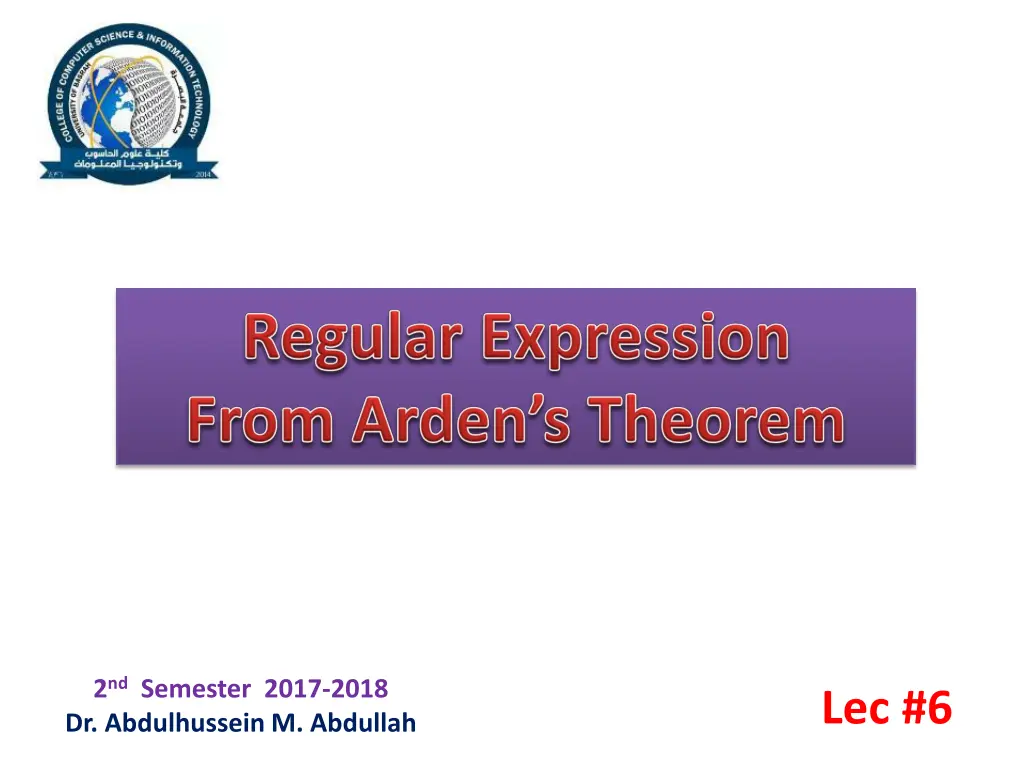
Regular Expression Identities and Arden's Theorem Explained
Understand Regular Expression identities and Arden's Theorem with step-by-step proofs and solutions. Learn to construct regular expressions from automata and apply Arden's Theorem effectively.
Download Presentation

Please find below an Image/Link to download the presentation.
The content on the website is provided AS IS for your information and personal use only. It may not be sold, licensed, or shared on other websites without obtaining consent from the author. If you encounter any issues during the download, it is possible that the publisher has removed the file from their server.
You are allowed to download the files provided on this website for personal or commercial use, subject to the condition that they are used lawfully. All files are the property of their respective owners.
The content on the website is provided AS IS for your information and personal use only. It may not be sold, licensed, or shared on other websites without obtaining consent from the author.
E N D
Presentation Transcript
2ndSemester 2017-2018 Dr. Abdulhussein M. Abdullah Lec #6
Arden's Theorem Let s assume that P and Q be two regular expressions. Incase if P does not include a , then R = Q + RP has a unique solution that is R = QP*
Proof R = Q + (Q + RP)P [After putting the value R = Q + RP] R = Q + QP + RPP If you include the value of R recursively repetitively then you will get the following equation
Assumptions for Applying Ardens Theorem The transition diagram must not have transitions It must have only one initial state
Method Step 1 Now create equations in the below mentioned form for all the states of the DFA having n states with initial state q1. Rij represents the set of labels of edges from qi to qj, if no such edge exists, then Rij = Step 2 Solve these equations to get the equation for the final state in terms of Rij
Problem Construct a regular expression related to the automata given below.
Solution Here the initial state is q2 and the final state is q2. The equations for the three states q1, q2, and q3 are as follows
Problem 2 construct a regular expression related to the automata given below
Solution Here the initial state is q1 and the final state is q2 Let s write the below equations
